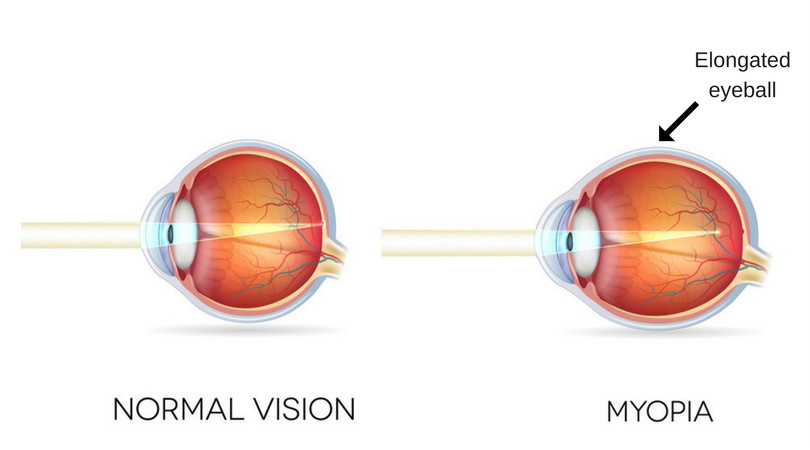
What is myopia? Is it the same thing as nearsightedness? Those two terms are often used interchangeably, but are they truly the same?
Nearsightedness is typically defined as an inability to see objects that are at a distance clearly. Myopia also makes seeing objects at a distance difficult. However, can you have myopia without nearsightedness?
The answer to the above question is “yes”. Think about what happens after laser vision correction, or LASIK. The patient will no longer need glasses or contacts to see distant objects clearly. Therefore, that patient will no longer be nearsighted. However, he will still by myopic.
Myopia is the excessive lengthening of the eyeball, and has multiple consequences. One of the better known results is the need for glasses or contacts in order to see clearly. Yet, there are other repercussions as well. Increasing myopia increases a person’s risk for vision threatening conditions such as retinal tears, myopic maculopathy, cataracts and glaucoma.
LASIK can fix nearsightedness. LASIK, though, cannot fix myopia – once myopic, always myopic. This is why it’s important to slow down the progression of myopia in children.
For more information, contact Dr. Edward Fong and the doctors at Bright Eye Care & Vision Development in Sugar Land, Texas.
References available upon request.
Medical Disclaimer. The information on this site is not intended or implied to be a substitute for professional medical advice, diagnosis or treatment. All content, including text, graphics, images and information, contained on or available through this website is for general information purposes only.









